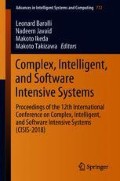Abstract
With the development of the network and the popularization of informatization, traditional circuit domain telephones are far from people’s needs. Therefore, the development of sip phones is particularly rapid. Unlike traditional circuit domain telephones, sip phones can be completely established in IP networks. However, IP networks have unpredictable vulnerabilities, so for sip phones, the implementation of a secure sip phone is naturally very important. Most of today’s sip phones are protected against security by using “Internet protocol security” (IPSec), but it has the problem of key exposure. As long as the hacker controls the client, the key will be very simple to get, so that the IP packet can be copied and the client’s SIP phone can be completely controlled. This paper proposes an ESP-based sip telephony optimization solution that can effectively prevent hackers from gaining full control of the client’s sip calls after they get the keys.
Access this chapter
Tax calculation will be finalised at checkout
Purchases are for personal use only
References
Kim, H., Kim, D., Kwon, M., Han, H., Jang, Y., Han, D., Kim, T., Kim, Y.: Breaking and Fixing VoLTE: Exploiting Hidden Data Channels and Mis-implementations
Beekman, J., Thompson, C.: Breaking cell phone authentication: vulnerabilities in AKA, IMS, and Android. In: WOOT (2013)
3GPP. ETSI TS 23.228. IP Multimedia Subsystem (IMS) Stage 2 (2011)
Global mobile Suppliers Association and others. Evolution to LTE report (2015). 11 May 2015
Acknowledgements
This work is supported by National Natural Science Foundation of China (Nos. U1536122, 61502536).
Author information
Authors and Affiliations
Corresponding author
Editor information
Editors and Affiliations
Rights and permissions
Copyright information
© 2019 Springer International Publishing AG, part of Springer Nature
About this paper
Cite this paper
Yang, W., Fu, Z., Ma, J. (2019). An Optimization Safety Solution for Sip Call Base on ESP. In: Barolli, L., Javaid, N., Ikeda, M., Takizawa, M. (eds) Complex, Intelligent, and Software Intensive Systems. CISIS 2018. Advances in Intelligent Systems and Computing, vol 772. Springer, Cham. https://doi.org/10.1007/978-3-319-93659-8_42
Download citation
DOI: https://doi.org/10.1007/978-3-319-93659-8_42
Published:
Publisher Name: Springer, Cham
Print ISBN: 978-3-319-93658-1
Online ISBN: 978-3-319-93659-8
eBook Packages: Intelligent Technologies and RoboticsIntelligent Technologies and Robotics (R0)

